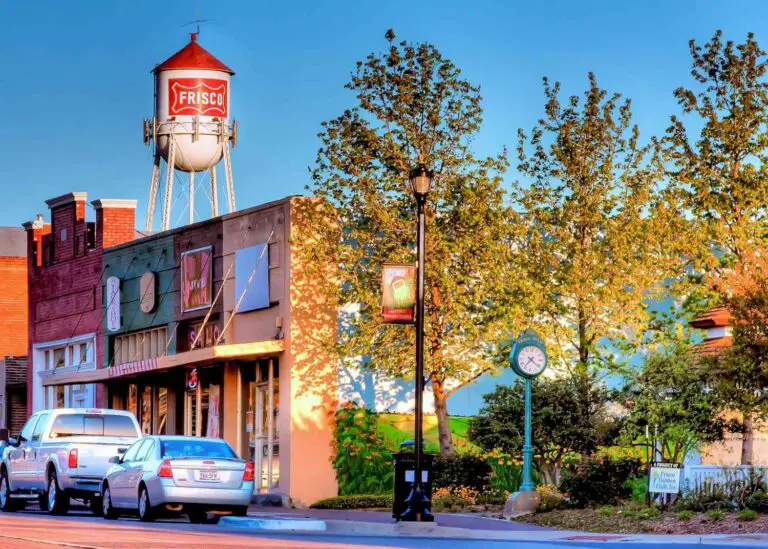What is an Unincorporated Community?
In the diverse landscape of geographical and administrative classifications, the term “unincorporated community” often arises. This term, while not commonly understood by many, plays a significant role in the structure and governance of various regions.
This article aims to demystify the concept of unincorporated communities, shedding light on their definition, characteristics, and significance in the broader context of territorial administration.
Defining an Unincorporated Community
An unincorporated community is a region that lacks its own government and typically falls under the administrative jurisdiction of larger governmental units such as a county, city, or township. These communities are often characterized by the absence of a municipal governing body like a city council, which distinguishes them from incorporated areas with self-governing capabilities.
Characteristics of Unincorporated Communities
Governance
In unincorporated communities, local governance and services such as police, fire protection, and public utilities are provided by the county or other higher-level administrative entities.
Zoning and Regulations
The zoning regulations in these areas are generally overseen by county-level authorities, which can lead to different land-use policies compared to incorporated areas.
Population and Size
Unincorporated communities can range from sparsely populated rural areas to densely populated urban regions. Their size and population vary widely, making them unique in their needs and challenges.
Taxation and Revenue
Residents in unincorporated communities may experience different tax structures, often lacking the additional taxes that fund city services but also missing out on certain service benefits.
Advantages and Challenges
Living in an unincorporated community comes with its set of advantages and challenges. On the one hand, residents often enjoy lower taxes and fewer regulations, which can be attractive for certain lifestyles and business operations. On the other hand, they might face limited access to services and infrastructural developments that are more readily available in incorporated areas.
Examples and Variations Across the United States
The United States provides a vast array of examples of unincorporated communities, each with its unique attributes. For instance, some unincorporated areas in states like California and Texas have substantial populations, rivaling small cities, while others in regions like the Midwest may consist of just a few households.
Impact on Residents
The lifestyle in an unincorporated community can differ significantly from that in an incorporated city. Residents often have a more direct relationship with county-level government and may experience a sense of community that is distinct from urban settings. The lack of local government can mean both fewer bureaucratic hurdles and a reduced level of localized representation, impacting how residents interact with and influence policies affecting their lives.
Economic Implications
The economic landscape of unincorporated areas can be unique. Without the need to support a municipal government, these areas can offer more attractive conditions for certain types of businesses, particularly those seeking lower taxes and regulation. However, the absence of municipal services can also be a deterrent for businesses that rely on such infrastructure.
Planning and Development
Urban and regional planning in unincorporated communities presents a different set of challenges and opportunities compared to incorporated areas. Planners must balance the needs and preferences of the residents with the policies and regulations set forth by the overseeing county or township. This can lead to diverse development patterns, from rural homesteads to industrial complexes.
Cultural and Social Aspects
Unincorporated communities often have distinct cultural and social dynamics. With a potentially closer-knit community and less urban influence, these areas can maintain unique local traditions and social norms. This aspect is particularly noticeable in regions with a long history or strong cultural heritage.
Environmental Considerations
The management of natural resources and environmental concerns in unincorporated areas is typically handled by county or state authorities. This can lead to different approaches to environmental protection and land use compared to cities, where local governments might have more stringent or specific policies.
The Role in the Broader Urban-Rural Continuum
Unincorporated communities play a crucial role in the urban-rural continuum, bridging the gap between densely populated cities and rural hinterlands. They offer insights into alternative living and governance models and contribute to the diversity of settlement patterns across the country.
Conclusion
The essence of an unincorporated community lies in its absence of its own local government and own elected officials, distinguishing it markedly from a local municipal corporation. This characteristic shapes many facets of life within these areas, from adherence to local zoning laws to the way services are administered. While a few unincorporated areas may lack certain amenities commonly found within city limits, they often enjoy a unique set of benefits that stem from being under the broader umbrella of county government. These advantages, often referred to as unincorporated community pros, include less direct governance, which can translate into fewer regulations and potentially lower taxes.
However, this lack of a localized administrative body also means that residents might not have as much influence over decisions that affect their immediate surroundings compared to those living within a formal municipality. In the landscape of settlement and governance, unincorporated towns and communities offer a glimpse into an alternative way of life, contrasting significantly with that of incorporated areas. Many unincorporated communities, despite not having their own governing council, thrive under the guidance and regulations set forth by the overseeing county authority.
These unincorporated settlements, often located beyond the bustle of city limits, bring forth a unique blend of rural charm and suburban convenience. While living in an unincorporated town comes with its own set of challenges, such as potentially limited access to certain municipal services, it also offers a sense of community and simplicity not always found in larger cities. As we explore the dynamics of urban and rural living, the role and appeal of unincorporated areas continue to be an integral part of the conversation, contributing to the rich tapestry of settlement patterns and community structures.






